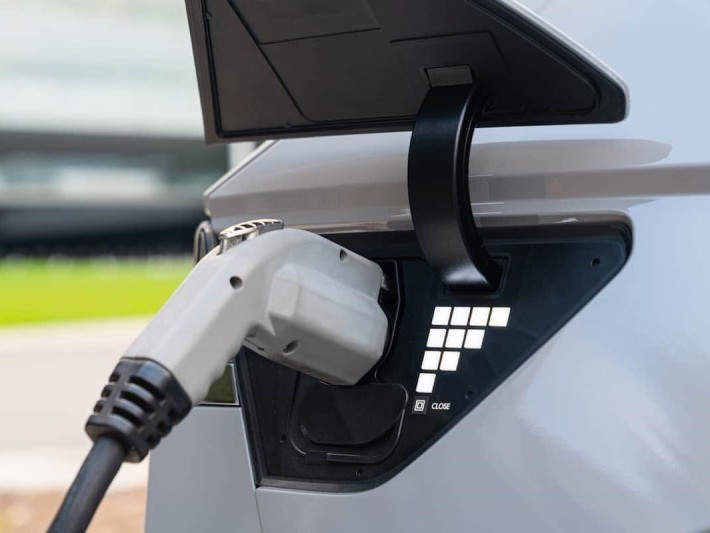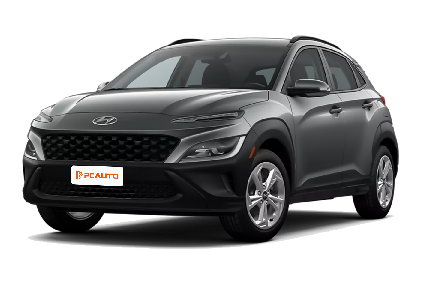Q
Is the 2020 Hyundai Kona AWD?
The 2020 Hyundai Kona does offer an AWD (All-Wheel Drive) option here in Malaysia, but it's not standard across all trims. It really depends on which variant you go for – typically, the higher-spec models are more likely to come with AWD to boost driving stability and grip on trickier roads.
Given Malaysia's rainy weather and some of those slightly rough suburban paths, AWD does a solid job of improving traction on wet surfaces or when you're doing a bit of light off-roading. But honestly, for everyday city driving, the front-wheel drive version is more than enough and way easier on fuel.
Hyundai's AWD system in the Kona is electronically controlled, so it shifts torque between the front and rear axles in real time – that way, you get a good balance of fuel efficiency and decent handling. Plus, there are different drive modes (Normal, Eco, Sport) to switch things up depending on what you need that day.
If you're someone who frequently heads up to the hills or into rainforest areas, AWD is definitely a useful feature. But it's worth thinking about your actual needs before deciding, because the AWD models do cost a bit more and drink a touch more petrol than the FWD ones.
Hyundai's local assembly here in Malaysia also helps keep the Kona pretty competitively priced for what you get. All things considered, it's definitely a model worth checking out.
Special Disclaimer: This content is published by users and does not represent the views or position of PCauto.
Related Q&A
Q
How much is an oil change for a Hyundai Kona 2020?
For a 2020 Hyundai Kona in Malaysia, an oil change typically runs between RM150 and RM300. The exact cost hinges on a few key things: the type of oil you go for (mineral, semi-synthetic, or full synthetic), whether you choose an official Hyundai service center or an independent workshop, and if other basic maintenance items like an oil filter replacement are included. Full synthetic oil does cost more upfront, but it offers superior engine protection and longer intervals between changes. Hyundai dealerships will usually use oil that meets Hyundai's specifications and often include warranty coverage with the service, while independent shops might have more competitive pricing. As a general rule, it's a good idea to change your oil every 5,000 to 10,000 kilometers or every 6 months to keep the engine running at its best. For Kona models with the turbocharged engine, full synthetic oil is even more recommended to ensure proper lubrication and heat management. Always check your vehicle's owner's manual for specific maintenance guidelines or consult an authorized Hyundai service center for the most accurate pricing and service recommendations.
Q
What is the problem with the 2020 Hyundai Kona SEL?
The main issue with the 2020 Hyundai Kona SEL in the Malaysian market centers around transmission jerkiness reported by some owners, particularly noticeable during low-speed gear changes. This likely ties back to the dual-clutch transmission's tuning characteristics. Additionally, a small number of vehicles have experienced false warnings from the electronic system, which can usually be fixed with a simple software update.
Under the hood, the 1.6L turbocharged engine performs well, but in Malaysia's tropical climate, it's wise to shorten the coolant replacement interval. The high heat and humidity here tend to speed up the degradation of coolant performance.
One standout feature worth mentioning is Hyundai's special attention to the Southeast Asian market: they beefed up the air conditioning system's cooling capacity specifically for the 2020 regional models. This makes it far better suited to our local climate compared to the European or American versions.
If you're eyeing a used Kona SEL, a key check should be the sunroof drain tubes. With Southeast Asia's frequent downpours, clogged drains can quickly become a headache. On the plus side, Hyundai has a pretty extensive dealer network across Malaysia, and their 5-year unlimited mileage warranty offers solid peace of mind for keeping maintenance costs in check down the line. For optimal care of that turbo engine, sticking with Hyundai-approved SPI-3 fully synthetic engine oil during regular services is definitely recommended.
Popular Cars
Model Year
Car Compare
Car Photo
Latest Q&A
Q
Does the 2019 Golf GTI have a timing belt or chain?
The 2019 Golf GTI uses a timing chain instead of a timing belt—a design that offers better durability and lower maintenance costs. Typically, a chain lasts as long as the engine itself and rarely needs replacement, whereas a belt requires inspection or replacement every 60,000 to 100,000 km. If neglected, a worn belt can snap and cause severe engine damage.
VW’s EA888 engine family has long relied on chain-driven systems, which are relatively quiet and highly reliable. That said, it’s crucial to periodically check the tensioner’s condition. Some earlier models experienced timing issues due to tensioner design flaws, but this was addressed in the 2019 version.
For performance enthusiasts, a chain system handles high-revving stress better, making it a common choice for hot hatches like the GTI. For daily driving, just stick to VW 50400/50700-spec oil as recommended in the manual—proper lubrication keeps the chain system healthy long-term.
One heads-up: If you hear noticeable metallic rattling near the front of the engine, have the guides or tensioner inspected ASAP. Unlike the telltale belt squeal before failure, this noise is a classic sign of chain-related wear.
Q
What is the recall on the 2019 GTI?
The 2019 Volkswagen Golf GTI was subject to a safety recall addressing two potential issues. First, the fuel pump control unit software could malfunction, potentially causing engine stalling in rare cases. Second, some vehicles might have rear suspension stabilizer link bolts that weren't tightened to specification, posing a loosening risk. Owners can visit authorized dealers for free software updates or bolt retightening.
These proactive recalls demonstrate Volkswagen's commitment to safety. Dealers often handle outstanding recall items during routine maintenance.
For performance-oriented models like the GTI, it's wise to go beyond recall checks. Pay close attention to the turbo system, DSG transmission fluid, and brake wear—these components endure more stress during spirited driving. If warning lights appear or you notice unusual noises, get a professional inspection promptly. Keeping the car in top shape ensures you can fully enjoy its dynamic capabilities.
Q
Does the 2019 GTI require premium gas?
The 2019 GTI does recommend using high-octane fuel (typically RON 95 or above). Its 2.0L turbocharged engine has a relatively high compression ratio, and premium gas ensures optimal performance while reducing knock risk. It also helps maintain engine cleanliness and long-term reliability.
While the car may tolerate lower-octane fuel (like RON 92), you’d see slightly reduced power output and fuel efficiency. Over time, it could also affect engine longevity. Turbocharged engines are particularly sensitive to octane ratings since turbos generate higher heat and pressure—high-octane fuel handles these conditions better.
Mixing different fuel grades occasionally won’t hurt, but sticking to the manufacturer’s recommendation is ideal. Also, periodic fuel additive treatments can help clean carbon buildup, especially for direct-injection engines.
One more thing: even with the same octane rating, fuel additive packages vary by brand. So, picking a reputable gas station matters too.
Q
How long will a 2019 GTI last?
The lifespan of a 2019 GTI largely depends on maintenance and driving habits. With regular oil changes, transmission fluid replacements, and avoiding aggressive driving, it can easily clock over 200,000 kilometers—or even more. Its 2.0T engine and DSG gearbox are proven combos, and as long as you stick to the factory service schedule, mechanical reliability won’t be an issue.
Just keep in mind: turbocharged engines demand extra care. Always use the right spec full-synthetic oil and monitor the cooling system. Climate plays a role too—hot, humid conditions mean paying extra attention to rubber seals and electronics. Every 50,000 km, have the timing chain and high-pressure fuel pump inspected (key items for turbos).
Driving style matters. Don’t redline it constantly, and let the engine warm up properly after cold starts. Rustproofing helps long-term durability, so regular underbody washes are smart. Nail these details, and this car’s built to last.
Q
How fast is the 2019 GTI?
The 2019 GTI truly delivers when it comes to performance. Under the hood lies a punchy 2.0-liter turbocharged four-cylinder, churning out 228 horsepower and 350 Nm of torque. Whether you opt for the engaging 6-speed manual or the lightning-fast 7-speed DSG, this hot hatch rockets from 0-100 km/h in just 6.3 seconds, with an electronically limited top speed of 250 km/h.
What really sets the GTI apart is its razor-sharp handling. The sport-tuned suspension and electronic differential lock work together to deliver precise steering and rock-solid cornering stability. It’s the perfect blend of everyday practicality and proper driver’s car thrills—a well-rounded hot hatch in every sense.
For enthusiasts, the GTI’s tuning potential is massive. Many owners go for ECU remaps or intake/exhaust upgrades to squeeze out even more power. Just remember to keep things street-legal—safety and compliance should always come first. Around here, these pocket rockets have a solid following, and it’s easy to see why.
View MoreRelated News

In Malaysia, which sliding door MPVs are available?
MichaelOct 30, 2025

Modern Ioniq 5 N Lands in Malaysia: Track-Level Performance Electric Vehicle is Here, Priced Possibly Below RM 400,000?
JohnSep 10, 2025

Hyundai's Big Return to Malaysia: Top 5 Models Expected
MichaelMay 30, 2025

580,000 km & 87.7% Battery Health: Ioniq 5’s Incredible Durability
MichaelMay 6, 2025

Revolutionizing Hybrids: Hyundai’s New System vs. Toyota's Hybrid System
Kevin WongApr 22, 2025
View More










Pros
Cons